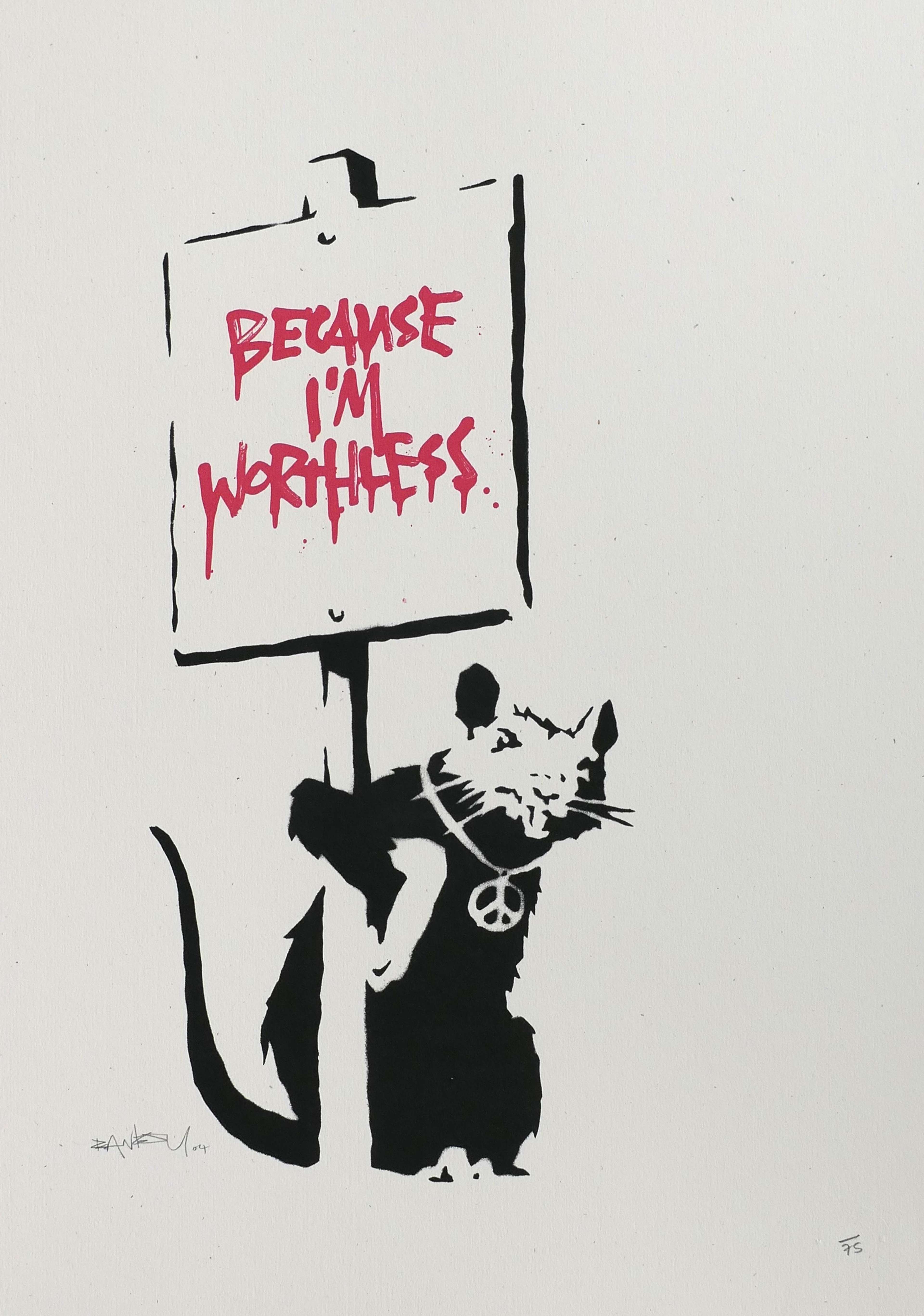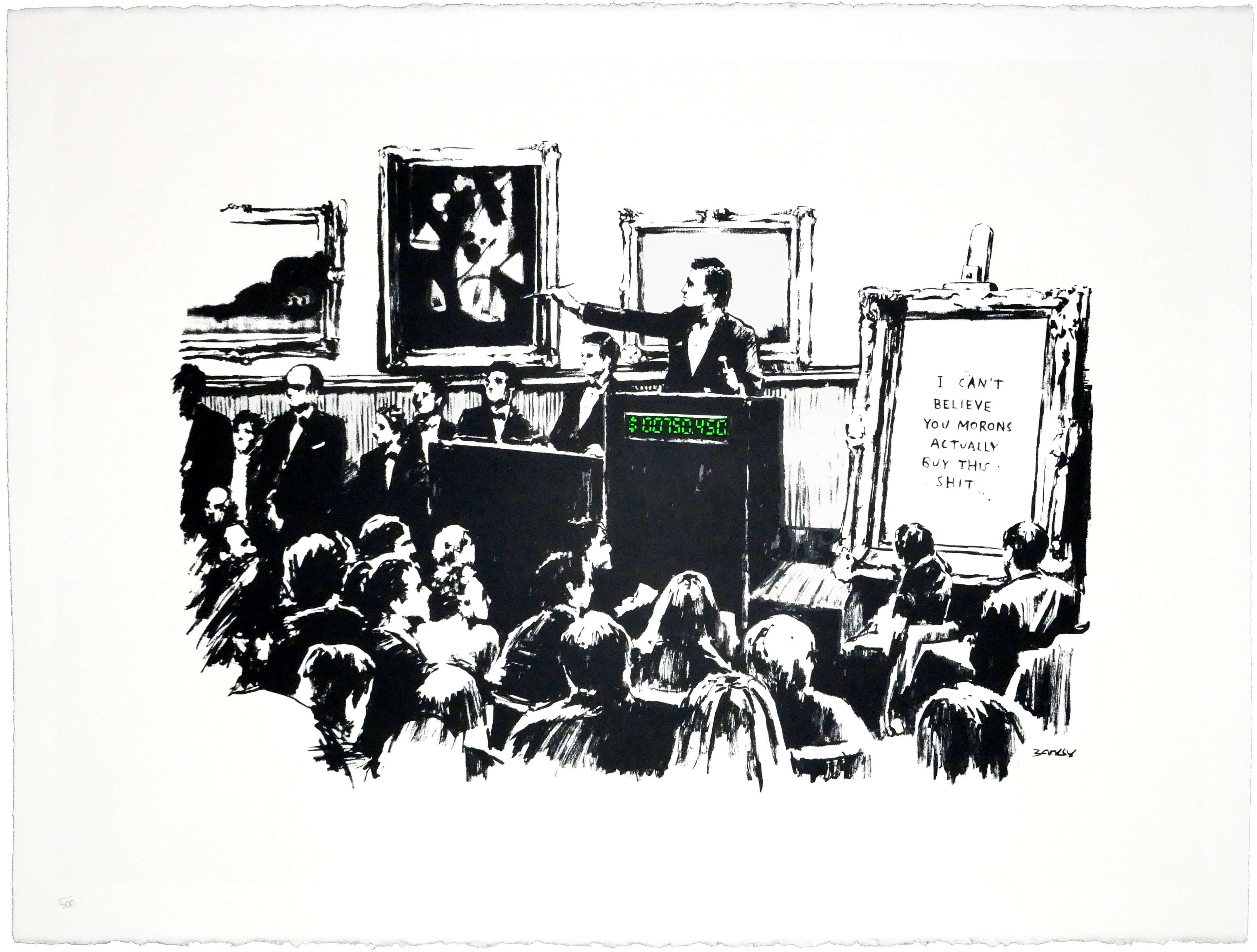 Apple (F & S 11.359) © Andy Warhol 1985
Apple (F & S 11.359) © Andy Warhol 1985Market Reports
Entering the world of NFTs can be a bit daunting when you're first starting out, but don't worry — we're here to help.
In this article, we'll go over the basics of investing in NFTs and give you some tips on how to get started. So read on for all the information you need to jump into the exciting world of non-fungible tokens.
Step 1: Research
Investing in NFTs is not all that different from investing in any other kind of asset. It's about finding the right opportunity and doing your research to make sure you're investing in a project that has potential. With that said, there are a few things you should keep in mind when looking for an NFT investment:
The platform the NFT is built on - There are a number of different blockchain platforms out there, and each one has its own strengths and weaknesses. Make sure to do your research on the platform the NFT you're interested in is built on before investing.
The team behind the project - A good team is essential for any successful investment, and that's especially true in the world of blockchain and crypto. It's not uncommon for founders to hide behind pseudonyms and make fake claims. As such, spend some time looking into the team before putting any money down.
The use case for the NFT - What is the NFT being used for? Is it just a digital collectible, or is it being used to power a decentralized application? The more useful an NFT is, the more potential it has for growth.
Whether the NFT is on-chain or off-chain - Despite what many believe, not all NFTs are stored on a blockchain. Off-chain NFTs are hosted on centralized servers, which can make them more vulnerable to hacks and manipulation. If you're looking to invest in an NFT, be sure to find out whether it is stored on-chain or off-chain.
These are just a few of the things you should keep in mind when looking for an NFT to invest in. Remember, research is key — so take your time and don't rush into anything.
Step 2: Get a compatible crypto-wallet
In order to buy and store NFTs, you'll need a cryptocurrency wallet that is compatible with the blockchain the NFT is on. For example, if you're looking to invest in an Ethereum-based NFT, you'll need an Ethereum wallet like Trust Wallet, MetaMask, or Ledger.
MetaMask is a free browser extension that makes it easy to store Ethereum-based tokens and use decentralized applications.
Step 3: Purchase the required crypto-currency
Now that you have a compatible wallet, you'll need to purchase the cryptocurrency required to buy the NFT you're interested in. For example, if you're looking to buy an Ethereum-based NFT, you'll need to purchase Ether (ETH).
So, why are you purchasing crypto? When you make a transaction on a blockchain, that transaction is recorded on the blockchain's ledger. In order to add a transaction to the ledger, you need to pay a gas fee - and that fee is paid in cryptocurrency.
Step 4: Choose your marketplace
Now that you have a wallet and the required cryptocurrency, it's time to choose an NFT marketplace. There are a number of different marketplaces out there, so take some time to explore and find one that you're comfortable with.
With a 97% market share, OpenSea is currently the largest NFT marketplace. It's clear to see why — with over 1 million users and over US$200 million in sales, OpenSea is the go-to destination for NFT investors.
Join the platform by creating an account, verifying your email address, and connecting your MetaMask wallet. It takes just a few minutes and you're ready to start buying NFTs!
Step 5: Make your purchase
After doing your research and choosing the right NFT marketplace, it's finally time to make your purchase. When you find an NFT you're interested in, simply click "Buy" or make an offer that's 5% higher than the current asking price.
The purchase of an NFT can not be reversed, so be sure that you're 100% comfortable with your decision before making a purchase. Don't make any commitments until you know the NFT is legitimate and that you're getting a fair price.
Step 6: Take delivery of your NFT
It's now time to wait for the transactions to be processed and for the NFT to be delivered to your wallet. This can take a few minutes, or it could take a few hours — it all depends on the blockchain being used.
Once the transaction is complete and the NFT is in your wallet, you're now the proud owner of an NFT!
How to make money investing in NFTs?
We have shown you how to get started investing in NFTs, but how can you make money from them?
The answer, unfortunately, is not so simple. Just like any other investment, there is no guarantee that you will make money from investing in NFTs. However, there are a few things you can do to increase your chances of making a profit. Here are a few tips:
1. Be early to the party
One of the best ways to make money with NFTs is to invest early into promising projects. Just like all investment opportunities, the early bird gets the worm. By investing early, you increase your chances of getting in on the ground floor of a successful project - and reaping the rewards that come with it.
For example, if you bought into the BAYC project in July 2021, you would have paid around US$12,000 per Bored Ape NFT. Today, the BAYC floor price (the lowest price for an NFT) is US$170,708!
Of course, this isn't always easy. It can be difficult to predict which projects will be successful and which will fail. This is where research comes in.
2. Look at the team
Make sure you do your due diligence and research each project thoroughly before investing. Look for projects with a strong team, a solid business plan, and a community that is passionate about the project.
These are all signs that the project has a good chance of being successful - and, as a result, that your investment will be worth more in the future.
3. Play play-to-earn games
These games reward players with NFTs for completing in-game tasks. This is a great way to get your hands on some NFTs without having to spend any money. Plus, it's a lot of fun!
There are a number of different play-to-earn games out there, so take some time to find one that you enjoy.
4. Mint your own NFTs
If you're creative and have some time on your hands, you could mint your own NFTs. This is a great way to get involved in the world of NFTs without having to spend any money.
All you need is a creative idea and a platform like Rarible or Mintable. Once you have created your NFT, you can put it up for sale on one of the many NFT marketplaces out there. With a little luck, someone will buy your NFT and you'll make a profit!
5. NFT staking
Another way to make money with NFTs is to stake them for a passive income. This works by locking up your NFTs in a smart contract for a set period of time. In return, you will receive payouts in the form of other NFTs or cryptocurrency.
FAQ
NFTs are a new and exciting technology, but they're also shrouded in a lot of mystery. Let's take a look at some of the most frequently asked questions about investing in NFTs.
Q: What tokens can you use to buy NFTs?
The most popular token for buying NFTs is Ether (ETH), but there are a number of different tokens that can be used, depending on the blockchain the NFT is stored on.
For example, many new NFTs use the Solana blockchain, which requires the use of SOL tokens to pay for transaction fees and exchange NFTs.
Q: Why buy through an NFT marketplace?
NFT marketplaces offer a number of advantages, including a wide selection of NFTs, the ability to connect with other investors, historic price data, and built-in wallets for storing your NFTs.
This is in contrast to buying NFTs directly from the artist or creator, which is a long process that requires more research and due diligence.
Q: What if you want to sell your NFT?
There will come a time when you want to realize the gains from your investment and sell your NFT. When that time comes, you can simply list it for sale on an NFT marketplace.
NFT marketplaces make it easy to find buyers and provide built-in wallets for storing the NFTs until the transaction is complete.
When selling an NFT, you'll need to pay a small transaction fee to the marketplace - typically around 2.5%.
Q: Can you buy an NFT without cryptocurrency?
While it's possible to buy an NFT with fiat currency (USD, EUR, etc.), it's not common or recommended. The vast majority of NFT marketplaces only accept cryptocurrency, so you'll need to purchase some before you can start buying NFTs.
Q: How do you know your NFT is authentic?
The blockchain makes it almost impossible to create a fake NFT, but there have been a few instances of fraud. Here's a quick run-through of the steps you can take to verify the authenticity of an NFT before making a purchase:
- Blockchain history - Every NFT has a blockchain history that shows when it was created, where it's been stored, and who owns it. You can use this history to verify that the NFT hasn't been tampered with
- Digital signature - Every NFT is signed with a digital signature that can be used to verify the identity of the artist or creator
- Website - Check the website of the artist or creator to see if they've verified the NFT. Recently, someone was tricked into thinking Banksy was selling NFTs. A simple website check would have revealed that the story was fake
Bottom Line
Investing in NFTs is a great way to support the creators you love while becoming exposed to new and exciting technology. Just be sure to do your research, know the risks, and only invest what you're comfortable losing.
Hopefully, this guide has given you the information you need to get started investing in NFTs.











